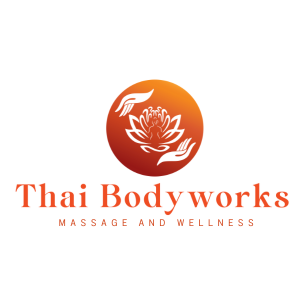
In the middle of Manhattan’s constant motion, a well-timed massage can reset your nervous system and clear the mental fog. This guide explores body-to-body massage as a therapeutic option you can find at reputable spas, not as a casual impulse. You’ll learn how to choose a trusted studio, what to expect during a session, and how to prepare so you get the most from the experience.
What is a body-to-body massage?
Body-to-body massage is a technique that uses the therapist’s body to guide and support strokes, creating a seamless flow across the skin. In professional settings, it’s delivered within clear boundaries and safety standards, prioritizing relaxation, circulation, and muscle release. It’s not a sexual service; it’s a form of therapeutic touch aimed at overall well-being.
Clients typically lie on a table with draping that preserves modesty while allowing long, gliding movements. The touch is responsive and progressive, adapting to your breathing and areas of tension. If you have questions about pressure, coverage, or goals, a quick conversation with your therapist helps tailor the session to you.
Where to find reputable studios in Manhattan
Manhattan offers a range of options, from luxury day spas to wellness clinics. The distinguishing factor is the professionalism you feel from the moment you arrive: clear policies, clean facilities, and therapists who introduce themselves and ask about preferences. Start with licensed massage therapists and establishments that publish credentials and service descriptions online.
To avoid disappointment, check reviews from trusted sources, ask about licensing, and verify that the studio operates within local regulations. A reputable spa will provide a pre-session consultation, ensure proper draping, and avoid any requests that blur professional boundaries. If a studio hints at services outside the standard scope of massage therapy, proceed with caution or seek another option.
| Red flags | What it signals |
|---|---|
| Pressure to remove clothing or move beyond standard draping | Unprofessional limits on boundaries; not a legitimate therapeutic setting |
| No clear pricing or upfront language about services | Hidden costs or unclear offerings |
| Therapist requests private information beyond medical history | Privacy or safety concerns |
What to expect during a session
When you arrive, you’ll typically start with a brief intake to note areas of tension, injuries, or preferences. The therapist will describe the treatment plan and confirm comfort with pressure and draping. The body-to-body portion is woven into a broader sequence of strokes that aim to relieve muscle knots and restore range of motion.
Throughout the session, you’ll be encouraged to communicate openly. You can adjust pressure, pacing, and zones that receive more attention. Expect generous use of warm oils, careful positioning, and a focus on breathing. The goal is a grounded, relaxing experience that leaves you feeling lighter, not overwhelmed.
Preparation and communication
Before you book, reflect on your goals for the session: stress relief, back tension, or improved flexibility. Share these with the studio and therapist so they can tailor the technique accordingly. It’s perfectly acceptable to ask about the therapist’s approach, duration, and what portion will involve direct body contact.
On the day of your appointment, arrive a bit early to complete forms and settle in. If you have sensitive areas or injuries, mention them upfront. After the session, hydrate and give yourself a few minutes to transition back to daily life; the effects can linger as your body adjusts to the release.
Pricing, etiquette, and safety
Expect a range in Manhattan that reflects location, spa tier, and session length. Common offerings include 60-, 90-, and 120-minute options, with prices that vary from spa to spa. When in doubt, ask for a price quote in advance and confirm what’s included—tip, gratuity, and any add-ons can impact the total.
- Respect boundaries: the therapist controls contact within professional limits, and you should feel safe to speak up at any time.
- Tip thoughtfully: 15–20 percent is a common baseline for good service, but adjust based on your satisfaction.
- Follow aftercare: drink water, avoid heavy meals immediately after, and give your body time to integrate the release.
In a city like New York, a well-chosen spa experience can be a true refuge. Look for studios with clear policies, clean facilities, and therapists who communicate clearly about what will be done and why. If anything feels off—pressure, discomfort, or a mismatch with your expectations—trust your instincts and seek another option.
For me, stepping into a quiet spa after a crowded day offered a rare moment of stillness. I appreciated the therapist’s steady presence, the way the oils warmed my skin without a heavy scent, and the careful attention to breathing and posture. It wasn’t about spectacle; it was about finding a moment of balance in a noisy city.
Ultimately, a thoughtful body-to-body massage in Manhattan can be a meaningful, restorative habit rather than a one-off indulgence. It’s not about chasing novelty; it’s about creating a space to reset, release tension, and return to daily life with a gentler pace. If you approach it with clear expectations and a focus on safety and consent, you’ll likely discover a service that genuinely supports your well-being.